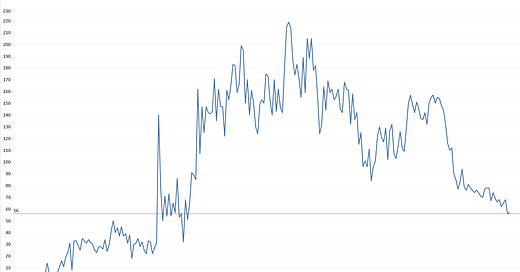Bonus 36: Why Congress Should Expand the Supreme Court's Docket
Giving the Court more to do isn't obviously "good" for conservatives or "bad" for liberals, but it could help to promote a more mutualistic relationship between the justices and the political branches
Welcome back to the weekly bonus content for “One First.” Although Monday’s regular newsletter will remain free for as long as I’m able to do this, much of Thursday’s content is behind a paywall to help incentivize those who are willing and able to support the work that goes into putting this newsletter together every week. I’m grateful to those of you who are already paid subscribers, and hope that those of you who aren’t will consider a paid subscription if your circumstances permit:
One of the central distinctions between the substance of Monday’s free issues and that of Thursday’s bonus content is the personalization of the latter. To that end, I wanted to use today’s installment to tie together some threads from a few of the recent Monday issues—and put into my own words why I’m such an ardent supporter of Congress re-asserting at least some control over the Supreme Court’s docket, including the suggestion to that end included at the end of Monday’s post.
If you believe, as I do, that the current Court has become too unaccountable and unresponsive to the political branches (regardless of which party controls the latter), docket reform ought to be the lowest hanging fruit when it comes to ways for Congress to reassert itself that would not (1) take away the Court’s power; or (2) change the Court’s composition. It also has the clearest historical support—given the Court’s all-mandatory docket prior to 1891. And it would get at what, to me, is the right problem—the justices having too much control over every feature of their workload.
To help make the point graphically, here’s a fantastic visual of the Court’s “merits” decisions per term, from the always excellent Dr. Adam Feldman:
Below the fold, I aim to persuade you that the continuing decline at the far right end of the x-axis (from the mid-2000s to the present) is a symptom of a fairly serious breakdown in the interbranch dynamic—and that the best medicine for that disease is for Congress to identify more cases that the Court must hear. For those who are not paid subscribers, the next free installment of the newsletter will drop Monday morning. For those who are, please read on.
Keep reading with a 7-day free trial
Subscribe to One First to keep reading this post and get 7 days of free access to the full post archives.




